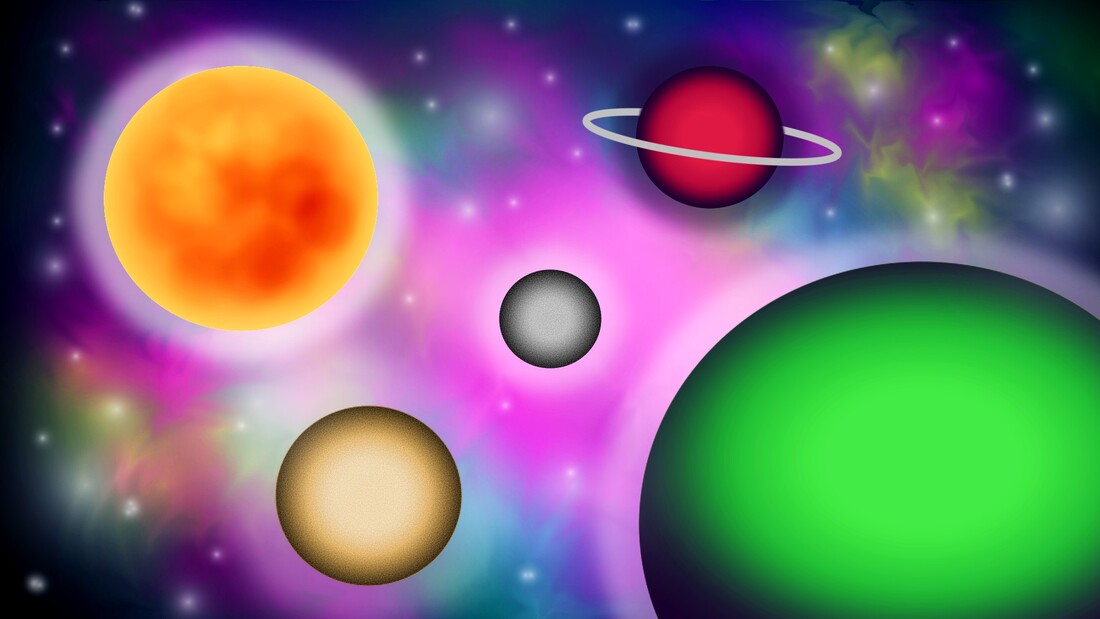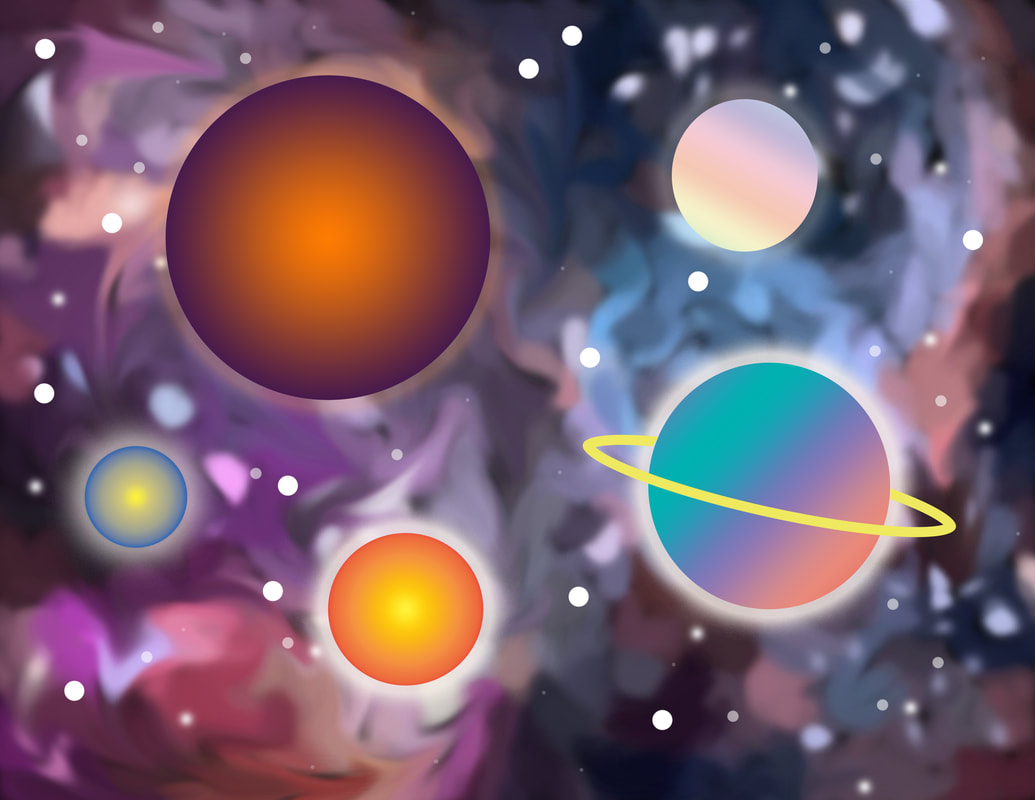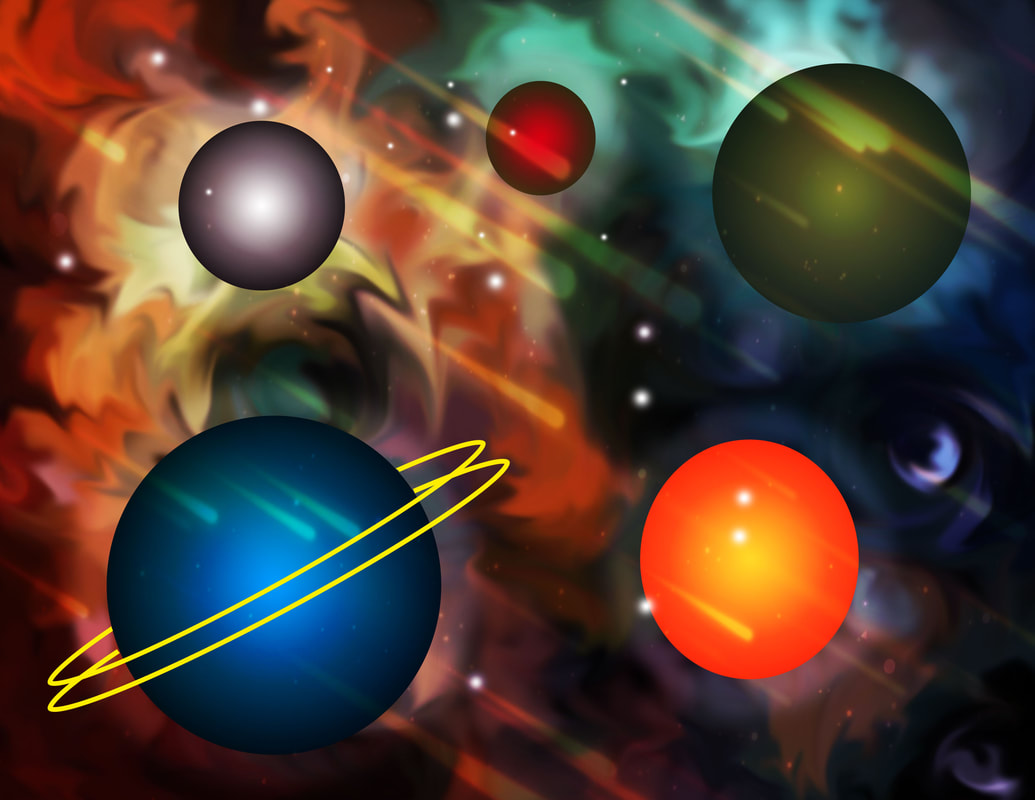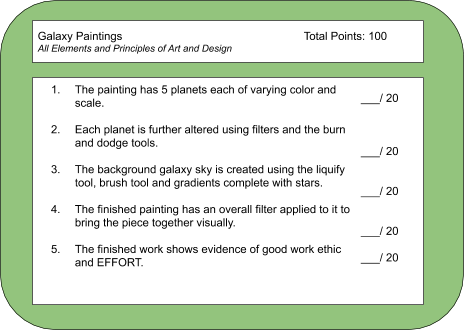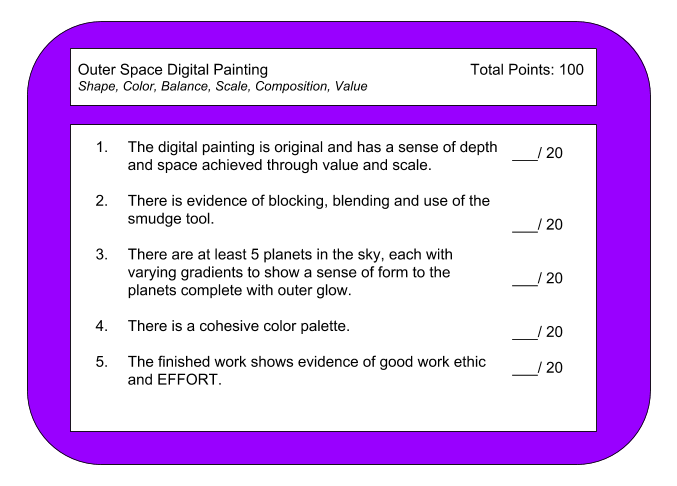|
Assignment # 1:
|
Watch this video to answer the questions in assignment # 1
|
|
Assignment # 2
You are to digitally paint your own outer space scene. It must include the following:
PHOTOSHOP Tutorial Below:
Student Examples: Photoshop Created
Student Examples: PIXLR Created
PIXLR E VIDEO TUTORIAL:
ONLY IF YOU HAVE TO DO IT AT HOME Reflection Questions:
|
PIXLR E CREATED
PHOTOSHOP CREATED
| ||||||
